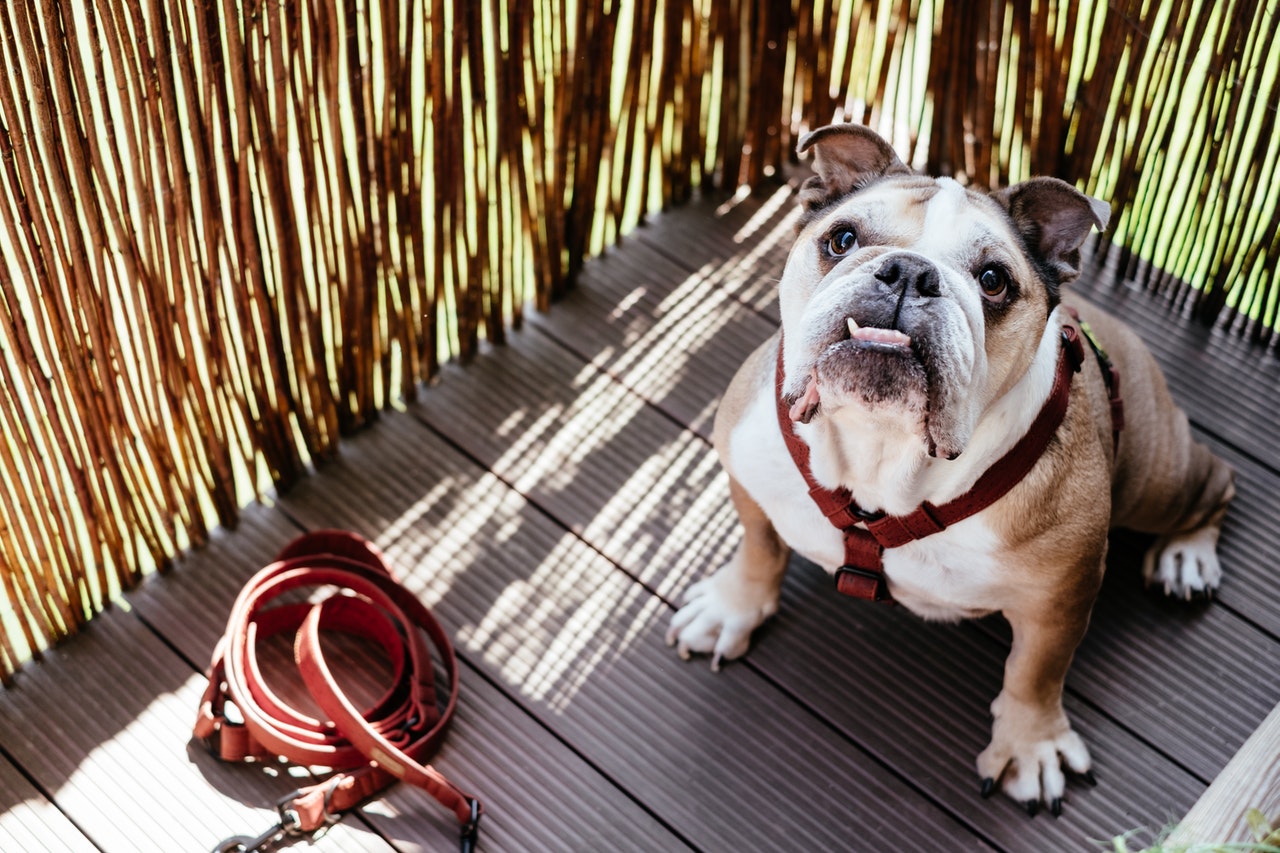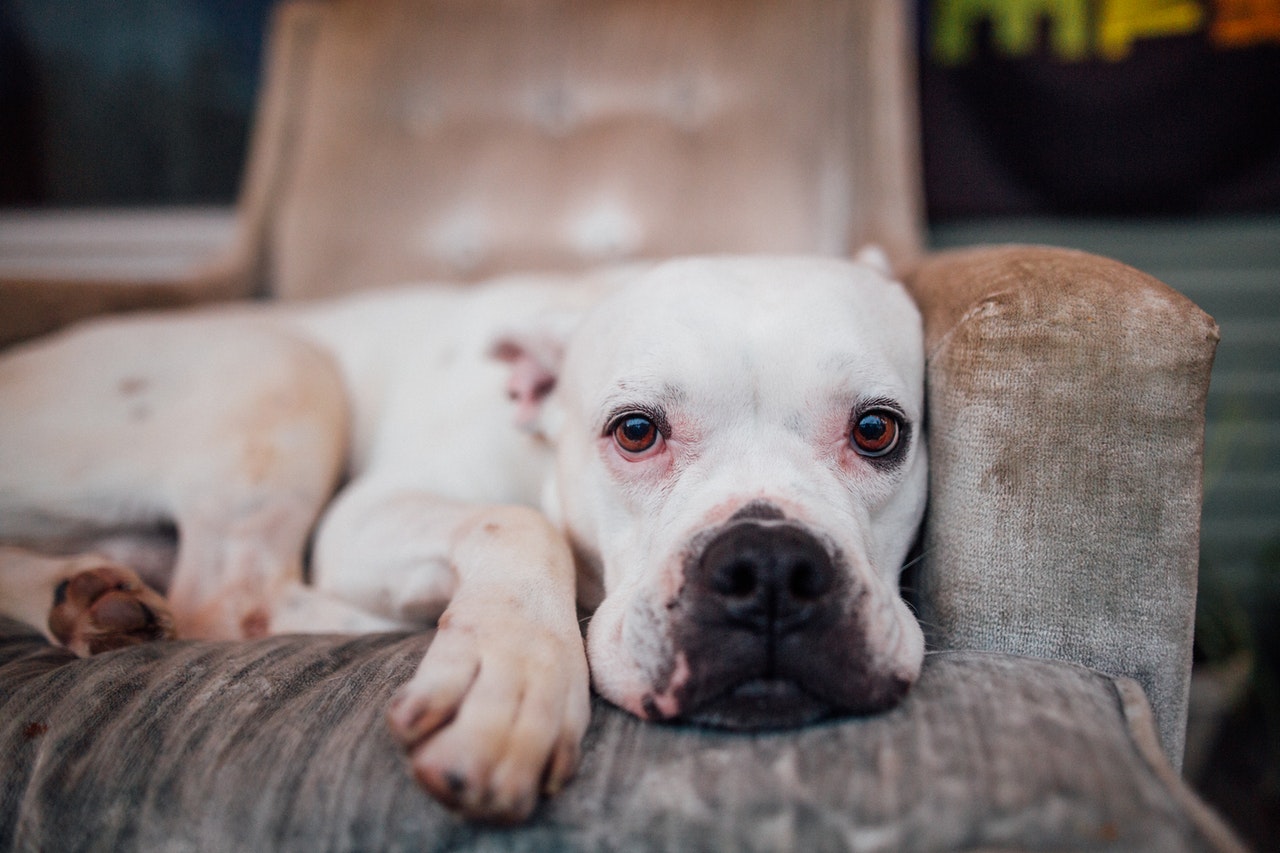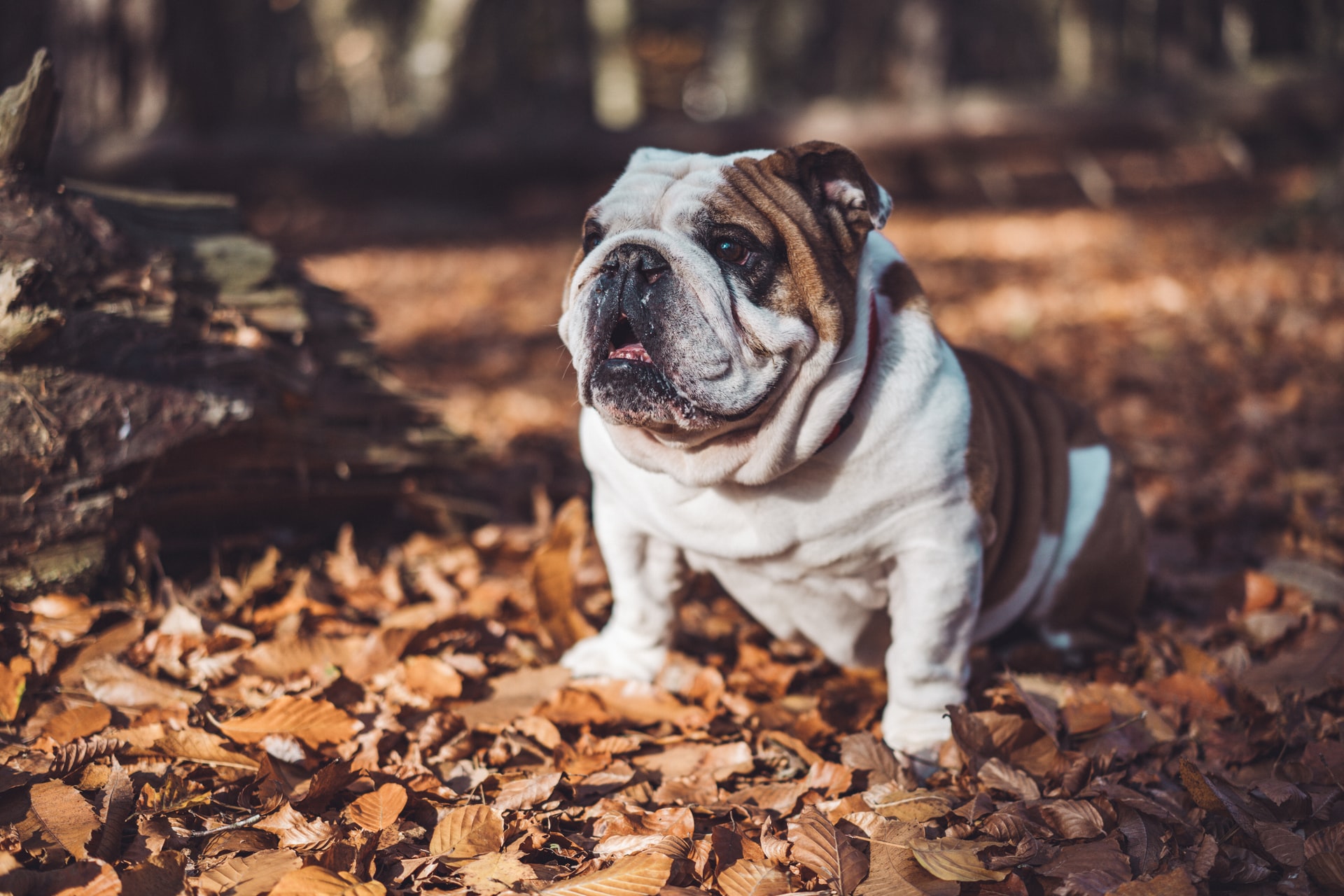A dog’s eyes are a window to its health. Any changes in color, size, and overall appearance can potentially indicate a health problem. Throughout its lifespan, your pet will experience a slew of these eye concerns, but many pet owners are asking one thing: why are my dog’s eyes droopy all of a sudden?
Dropping of the eyelids in dogs can either be a normal breed feature or a health concern that requires immediate veterinary attention. In this post, we will tackle this topic to help dog owners be informed. Still, if your pooch is having droopy eyes all of a sudden, we still encourage you to take the canine to the vet for proper diagnosis.
Why are my dog’s eyes droopy all of a sudden?
There are a variety of reasons why a dog’s eyes may start to droop. If you’re curious about the possible case of your dog, here are the potential culprits you should watch out for:
🐶It’s natural for your dog’s breed.

Before you jump, to conclusions, you should consider whether the droopy eyes are actually related to the dog’s breed.
For example, Basset Hounds and Bloodhounds have naturally droopy eyes. Their eyes tend to look sullen even if they are healthy.
However, you should still remember that these breeds aren’t invincible to eye problems. If you think that the droopiness of your pet’s eyes is beyond normal, it doesn’t hurt to consult the veterinarian.
🐶Your dog has ectropion.
If there’s a common reason behind a dog’s droopy eye, it would be ectropion. This condition causes one or both of a canine’s lower eyelids to droop. What happens is that the lower eyelid rolls away from the eye, which then exposes the conjunctiva.
The conjunctiva is the tender mucous membrane on a canine’s eye. It’s not supposed to be exposed because it’s prone to irritation.
Almost every dog can develop ectropion, no matter what their age is. Still, breeds with naturally droopy eyes are more prone to suffer from this problem.
Moreover, ectropion in dogs can be due to infection, underlying injury, inflammation, and so on. Also, dogs that are poorly bred or have been neglected will be at a higher predisposition to this problem.
Take note that ectropion isn’t painful for dogs right away. However, it can cause irritation as the conjunctiva is exposed. Over time, your pet will try to paw or rub its eyes to ease the discomfort.
Ectropion in dogs can only be treated once the underlying cause has been determined. For a mild case, eye drops, eye lubrication, and ointments are enough to manage the condition. However, if the drooping is worse, the vet may need to surgically correct the eyelid by tightening it.
🐶Your dog has head trauma.

Head trauma in dogs can also lead to drooping eyes, either in one or both peepers. On the outside, head trauma or head injury in dogs will make their eyes reddish. Some will have obvious bleeding in the eyes accompanied by mild drooping.
You’ll also notice your dog’s pupils having an uneven size. And if the head injury affected its brain, the canine may also have a hard time blinking and moving.
In this case, the droopy eye is the least of your concern. What you need to worry about is the injury inside your pet’s brain, which can be life-threatening if not addressed right away.
A lot of possible causes can lead to head trauma or brain injury. It’s possible that your dog fell from an elevated surface, has been hit by a car, or attacked by someone. On the other hand, oxygen deprivation, blood clots in the brain, poisoning, and blood pressure inconsistencies can also be possible culprits.
If you suspect that your dog has head trauma, you must rush it to the nearest veterinarian. Time is your biggest enemy with these kinds of injuries.
🐶Your dog is suffering from infections.
Eye infection in dogs can cause eye drooping among other symptoms. Aside from a drooping eyelid, your dog will also suffer from discomfort, pain, and a slew of secondary infections if the condition isn’t addressed right away.
Aside from that, dogs with eye infections will also experience swelling around the affected eye, sensitivity to light, watery eye discharge, squinting, and keeping eyes closed. Take note that most eye infections in dogs will only get worse the longer you put off proper treatment.
It’s not a good idea to self-medicate your dog’s eye infection unless instructed and guided by the vet. Take note that canine eye infections can only be treated once the underlying cause has been properly diagnosed.
🐶Your dog has Horner’s syndrome.

Horner’s syndrome in dogs affects the animal’s facial muscles. It also targets the eyes, which will make the upper eyelid appear drooping. Take note that this health issue can affect either one or both sides of the canine’s face.
Aside from drooping, dogs with Horner’s syndrome will also have a sunken appearance around the affected eye. It’s accompanied by the prolapse of the third eyelid or conjunctiva as well as constricted pupils.
As for the cause, most cases are attributed to a malfunction in the canine’s sympathetic nerves around the facial muscles. Such malfunction can be the cause of injury to the dog’s facial area, inner or middle ear diseases, or even tetanus.
Unfortunately, some cases of Horner’s syndrome in dogs are idiopathic. These cases aren’t treatable and the best thing pet owners can do is manage the symptoms.
Nevertheless, dogs with idiopathic Horners syndrome tend to have a good prognosis. The adverse symptoms may resurface if your pet acquires a new infection. Nonetheless, the condition is manageable.
🐶The cause is idiopathic.
Lastly, a dog’s droopy eye can be idiopathic in nature. Idiopathic means that the root cause of the problem isn’t known. And since vets don’t know the cause of droopy eyes, they can’t treat it fully. In this case, management of the symptom and severity of the condition is the best course of action.
Overall, idiopathic drooping eyes aren’t very common, but they can still happen. The vet will be the one to confirm this part on your and what the next treatment plan will be.
Don’t worry because idiopathic cases of eye drooping in dogs aren’t always serious. Many dogs with this eye problem can live long and normal lives as long as the symptoms are managed.
What are the treatments for droopy eyes in dogs?
Mild cases of eye drooping in dogs will resolve on their own. But regardless of its severity, you should keep the following in mind:
🐶Diagnosis
The first step in identifying the proper treatment for your dog’s droopy eye is to actually diagnose the cause in the first place. The vet is the only person that could conduct this process properly.
Depending on the symptoms your pet is showing, the vet may decide to perform blood tests, ultrasound, X-ray, and physical exam. In some cases, the veterinarian may recommend CT or MRI scans from an animal hospital.
After your dog’s vet has come up with a diagnosis, the next step is a treatment plan. It can either be through medication or surgical intervention as I discussed below.
🐶Antibiotic treatments
For dogs diagnosed with bacterial infections that cause droopy eyes, antibiotic treatments are the usual course of treatment. Antibiotics are life-saving, especially for canines suffering from a bad case of infection not just in the eyes but in other parts of the body as well.
Take note that antibiotics should only be given to dogs under the prescription of a veterinarian. It’s because the vet will administer the proper dosage that matches your dog’s needs.
In most cases of droopy eyes, your dog can take the antibiotics at home. You just have to follow the prescription and instructions of the veterinarian for your pet’s recovery.
🐶Surgery
In cases when the droopy eyes aren’t infection-triggered, the vet may opt for surgical intervention. The goal here is to tighten the droopy eyelids by removing a small part of them and then stitching the ends back again.
This approach is more common for ectropion, much so for severe types. Depending on the severity of your dog’s eye drooping, two surgeries could be conducted. A primary and secondary operation might be needed to correct the drooping eyelids.
Remember that this surgical procedure is only done on dogs aged 6 months and up. It’s because some cases of droopy eyes in canines will clear up on their own once the pooch reaches its adult size. In short, its eyelids just need to be filled in, so it pays to wait for a few months if your pet is still a puppy.
🐶Protection
Once your dog received the necessary treatment for its droopy eyes, the last step is to protect its peepers from infection. This is a great need, especially if your dog underwent surgical correction for problematic eyelids.
Putting an Elizabethan collar on your dog helps a lot, so it won’t try to scratch its irritated eyes. The vet will also require this, especially if a topical eye solution will be administered.
Even after your dog’s recovery, it’s important to protect your pet’s eyes. You should also make it a habit to check your dog’s peepers from time to time to determine whether there are sudden changes.
Moreover, you may need to isolate your pet from other dogs in your household to allow it to rest. This is also to avoid the risk of other dogs pawing your healing doggo in the eye.
Frequently Asked Questions
Q: Why do my dog’s eyes look sad?
A: Your dog’s eyes may look sad because of its drooping eyelids. This is normal for breeds like Basset Hounds. However, if the drooping is getting worse, you may want to get your dog checked for health problems. The sad look on your pet’s face may actually be a sign of an underlying health concern.
Q: Do puppies grow out of droopy eyes?
A: If your puppy seems to have droopy eyes, it will likely outgrow the condition after reaching a year old. However, if the drooping becomes worse or isn’t going away, you should consider bringing the pooch to the vet. Something might be wrong with its health, which needs to be addressed as early as possible.
Q: Should I worry about my dog’s eyes?
A: A dog’s eyes are one of the most vulnerable parts of its body. If you notice any changes in appearance, you should consult the vet if possible. Also, if there’s any discharge in your dog’s eyes, you should consider it as a cause of concern. Such discharge may indicate an infection or bigger problem that requires serious treatment.
Q: What color should my dog’s eyelids be?
A: A dog’s eyelids should have a pale pinkish color. If it’s too reddish, it might be a sign of irritation. A foreign matter probably got into your dog’s eyes. However, if the eyelids appear swollen and protruding, your pet might be suffering from the cherry eye. This is a prevalent condition among dogs, especially breeds like Bulldogs. Treatment for this condition is easy and most dogs realize a full recovery.
Q: Why does my dog have weepy eyes?
A: Weepy eyes in dogs can be a symptom of irritation. Still, some breeds are naturally notorious for tearing and aren’t something to worry about. However, if your pet’s weepy eyes are accompanied by an unusual discharge, swelling, and deformation, the dog requires professional veterinary care.
Q: Is ectropion in dogs serious?
A: Ectropion isn’t always a serious condition in canines. But if the outward rolling of the canine’s eyelid gets worse, it will need veterinary attention. Overall, it’s still best to bring your dog to the vet as a professional can handle the condition better.
Q: Why is my dog’s third eyelid red?
A: If your dog’s conjunctiva or third eyelid is red, it might be suffering from a condition called conjunctivitis. It’s also a potential sign of cherry eye among canines. If you’re worried, you can always call the vet for professional advice.
Final words
Why are my dog’s eyes droopy all of a sudden? It can be anywhere from breed features, ectropion, head trauma, infections, and more. The key here is getting your pet diagnosed as early as possible to save it from further discomfort.
Depending on the actual cause of the droopy eye, your pet may only need medications. On the other hand, some pooches may require surgical intervention to correct the problem.
Have you encountered the same problem before with your dog? How did you handle it? Share your experience below!

